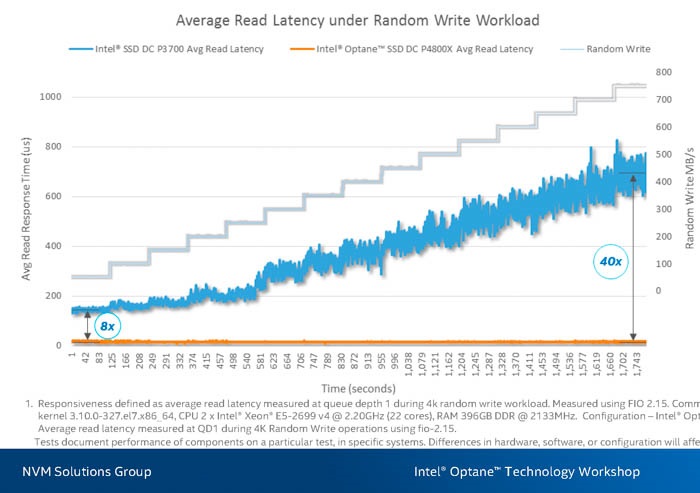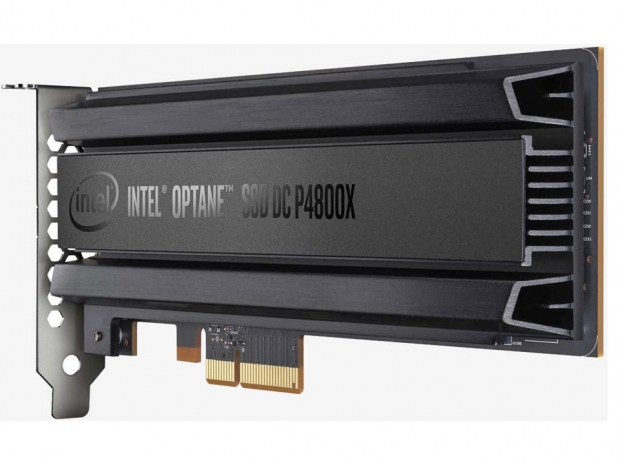The first Optane-branded storage device is called the Optane SSD DC P4800X, which the company says is designed to be used either as high-performance storage or as a caching device in data centers. The card features a capacity of 375GB, with latency of under 10 microseconds (10µs), along with 550,000 random 4K reads, 500,000 random 4K writes, and an overall endurance rating of 12.3 petabytes written (PBW).
3D XPoint memory is about 100 times lower latency than NAND flash, sits right under DRAM (faster), but really puts some pressure on the data center market in terms of access times and endurance ratings. Intel claims that the low latency and high endurance can yield between eight and 40 times faster responses under large workloads, especially for database applications, while consistently outperforming NAND-based technologies.

Intel Optane workload latency (via NVM Solutions Group)
Originally, the company’s plan was to release 16GB and 32GB Optane storage products under the Intel Optane Memory 8000p series. These units were capable of reaching up to 300,000 random 4K reads and 120,000 random 4K writes, and up to 1,600MB/s sequential reads and 500MB/s sequential writes. The release date for these smaller configurations is currently unknown but are still scheduled for release sometime later this year.
The first noticeable benefit to using Optane as a storage product for enterprise users is the option to significantly upgrade the overall capacity of onboard RAM. For instance, Intel’s dual-socket Xeon systems can support up to 3TB of DRAM but are able to accommodate an additional 24TB of Optane storage. Quad-socket systems, on the other hand, can accommodate 12TB of DRAM and an additional 48TB of Optane storage.
Not cheap - $1,520 at launch, compatible with Kaby Lake
The Intel Optane P4800X 375GB PCI-E add-in card will initially be a very application-specific product for "creative professionals" and enterprise users who need low-latency caching at every point in their systems – from onboard CPU cache, to storage, to DRAM. The other usage model will be for enterprise users who need substantially more memory available to their systems, even at a slightly higher latency cost. The company will initially release the 375GB PCI-E model at $1,520 with limited availability, followed by 375GB and 750GB U.2 models in Q2, and a 1.5TB PCI-E add-in card in the second half of the year.
We expect these modules to be compatible with current Z270 chipsets along with upcoming X299 chipsets due in fall.
Optane DIMMs come next year
This year, Intel is sticking to Optane products in the PCI-Express form factor, but next year plans to make the technology more flexible to performance and enterprise users in the form of individual Optane DIMMs. Pricing and spec options on such modules has yet to be discussed, though the technology available in both formats is expected to significantly boost applications that require large amounts of raw memory consumption.




